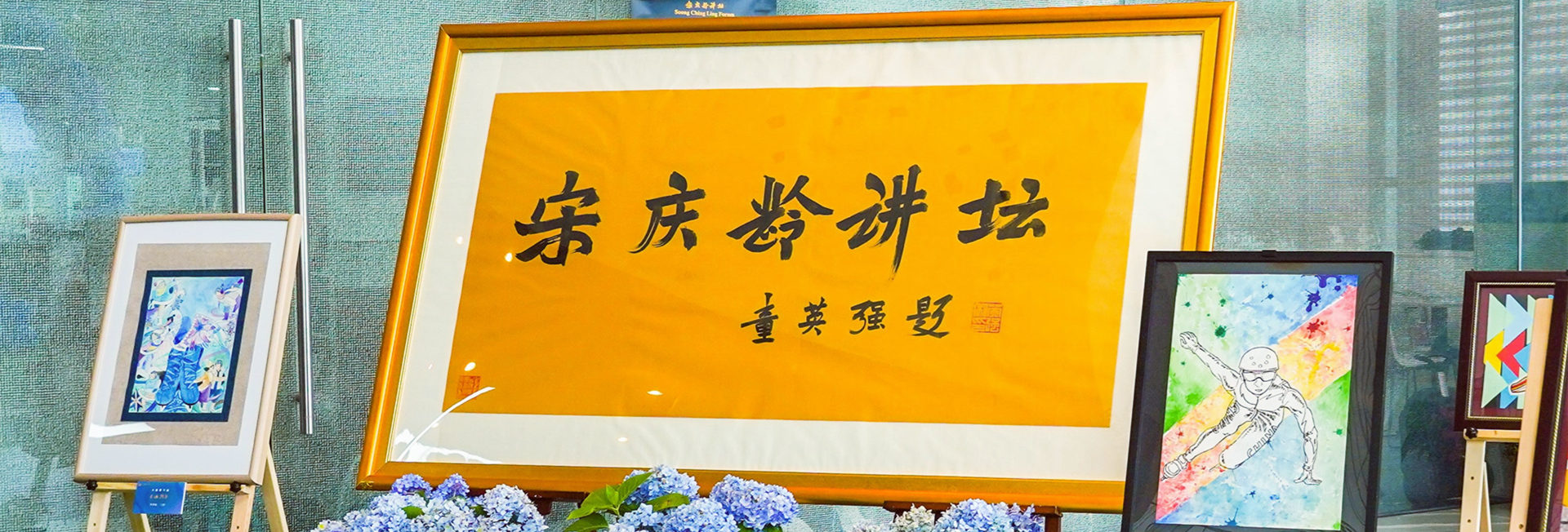
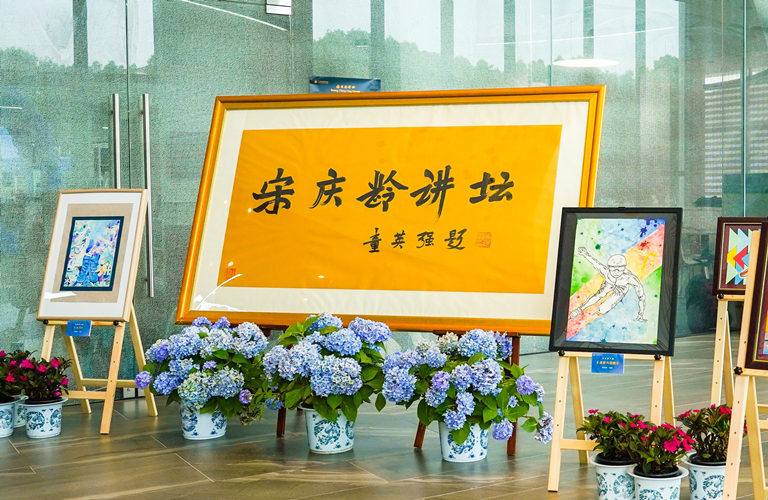

Recently, the former president of the Taipei Palace Museum, Chou Kung-shin, visited Soong Ching Ling School. As an Honorary Guest of the Soong Ching Ling Forum, she talked about how to learn Chinese Culture and history from Chinese idioms with 1,300 students and teachers.
Pan Yan, member of the Party Committee of the China Welfare Institute and vice secretary-general, attended the Soong Ching Ling Forum and presented the Certificate of “Honorary Guest of Soong Ching Ling Forum” to Professor Chou. Many unit leaders of the China Welfare Institute participated in this event.
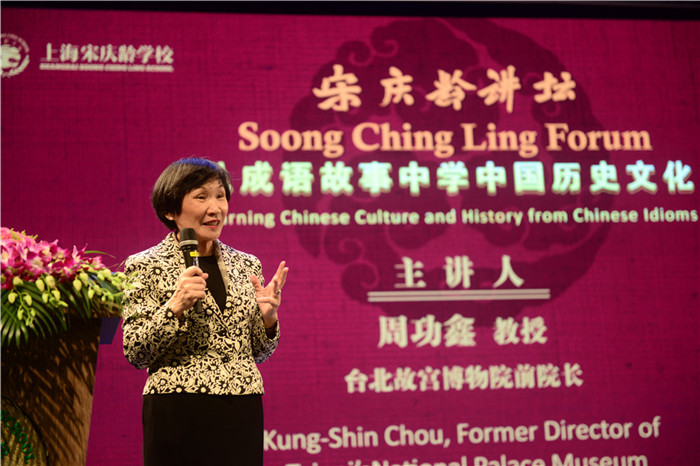
Soong Ching Ling Forum Honorary Guest - Chou Kung-shin
· Doctor of Art History and Archaeology, University of Paris IV, France.
·As the former president of Taipei Palace Museum, she has planned several exhibitions that have sensationalized the Chinese society. Among them, the joint exhibition of “Dwelling in the Fuchun Mountains”, which has been separately collected by Taiwan province and the mainland China for more than 360 years, is the most well-known. She also initiated communication between the Palace Museums in Beijing and Taipei to promote cross-strait cultural exchanges.
· She was awarded the “Ordre des Arts et des Lettres” by the French Ministry of Culture, the “Ordre national de la Légion d'honneur”by the French President, and the “Chinese Cultural Figure” by the Chinese Culture Promotion Society.
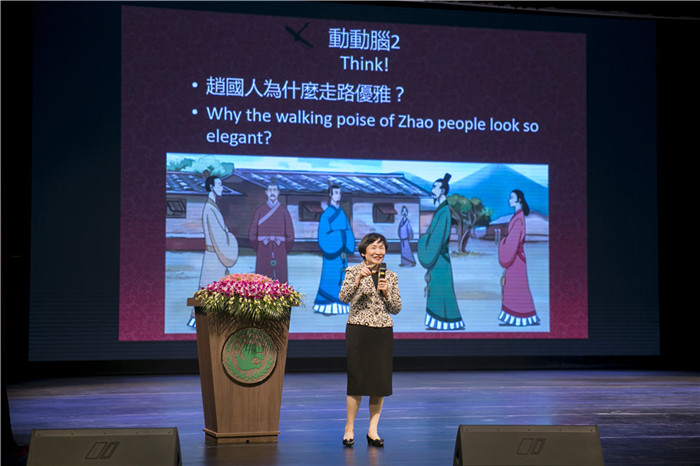
“Back to the era of the idioms”
In her presentation, Professor Chou said that idioms are like magic keys that can open the door to Chinese culture. She told the story of the idiom “Wan Bi Gui Zhao,” which means returning jade intact to the State of Zhao, and elaborated on the tradition of clothing, dining, living and transportation in the Warring States Period (475-221 BC). Such stories and illustration are collected in her book "Illustration on Chinese Cultural Stories." She said all the pictures in the book have their origins. There is a source to trace for the readers to imagine how the life is back to the era of the idioms.
Professor Chou also pointed out that one of the Bronze wares in the story originated from the “Gold Dragon Pattern Bronze Ware” in the Shanghai Museum. The students were excited to hear that and began saying they should go to the Shanghai Museum and see it with their own eyes.
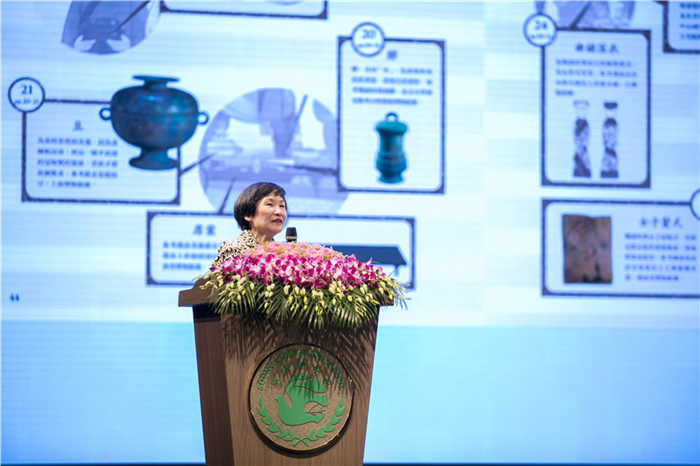
▲Did you find the Bronze Ware?
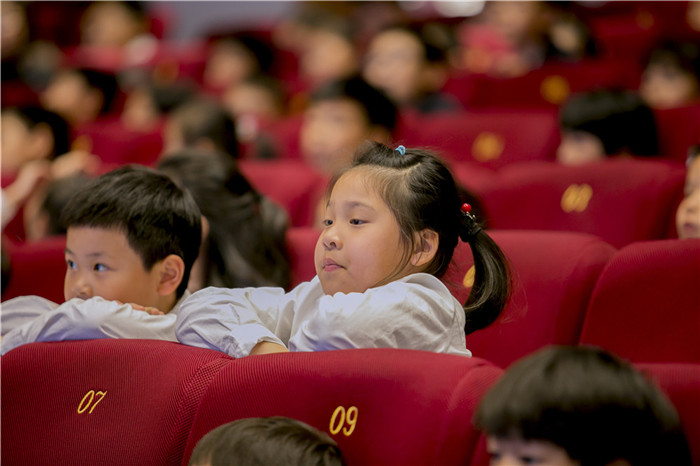
During the speech, Professor Chou played an animation of the idiom “Han Dan Xue Bu”, which means the people from the State of Yan learn the walking gestures of the people in Han Dan, the State of Zhao. This story aroused great interest from the students. She discussed the question of why the Yan people were not able to learn the gestures of Zhao people with the students. "Because the Yan people did not grasp the essentials." "Because the Yan people did not know about the art as much as Zhao people." The students raised their small hands, eagerly waiting to ask questions.
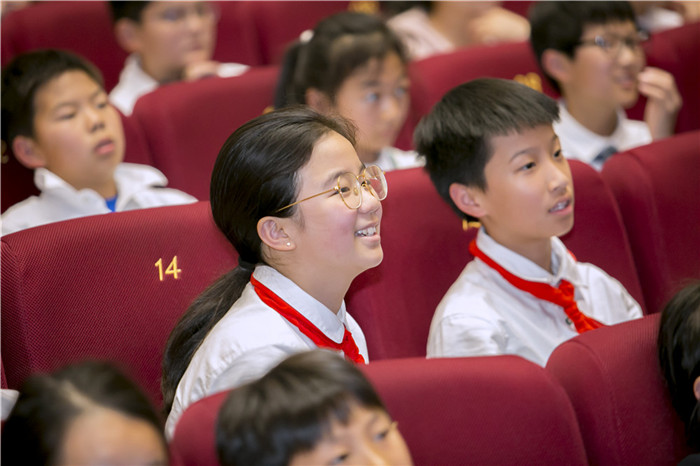
"Because the Zhao people had been infiltrated in the atmosphere of art and culture for a long time. everyone liked music and dance. Zhao people knew about the music and art from their hearts. When they walk, they cooperate with the rhythm of the heart. So that their gestures were natural and elegant." Professor Chou’s explanation is easy for the students to understand. It is only after learning an idiom story, and also understanding the historical background behind the story, that the students will truly "know why".
French, programming, archaeology... The cross-area life of the museum curator
In the speech for middle school and high school, professor Zhou talked about her life: She majored in French for her university study. After graduation, she stayed in the university as a teaching assistant and completed computer programming courses. In 1973, she applied to the Taipei Palace Museum for a "guided tour". After that, she devoted herself into the career of promoting Chinese history and culture.
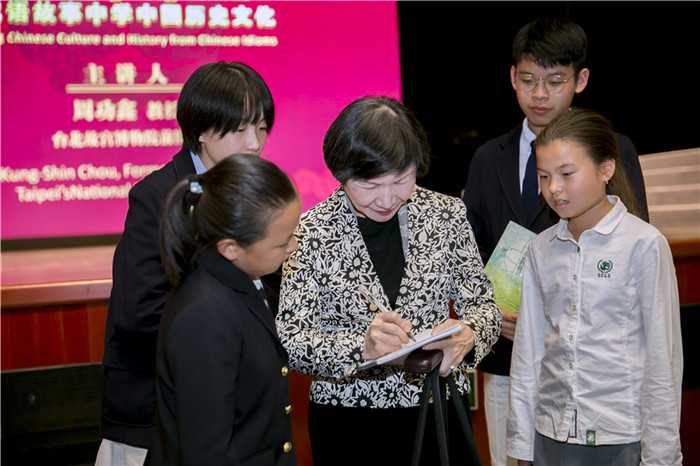
After the publication of "Illustration on Chinese Cultural Stories", Professor Chou and her team produced the Chinese Culture Online Learning App, which combines diverse modern media, including animation, games and interactive cultural relics education, etc.
French, programming, museum... from the seemingly cross-area life of Professor Chou, the students know her perspective on the blend of Eastern and Western culture and the combination of the art and science. One student said, "I may not know what I want now. But maybe my future will be like Professor Chou. That will be one choice for me to contribute my life." Another student said, "The many different things you learn may eventually come together and lead to your own life."
After the speech, the students were still interested and took the opportunity to ask Professor Chou to discuss about the history. These students who were particularly interested in Chinese history, under the guidance of Professor Zhou, further stimulated the enthusiasm of learning and research.
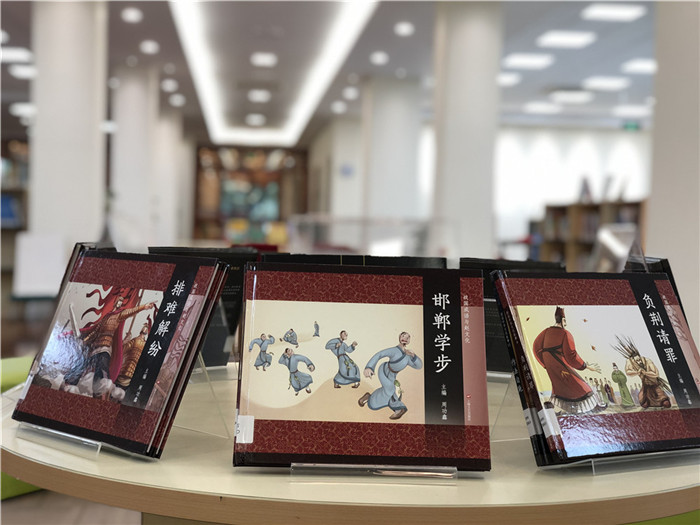
▲"Illustration on Chinese Cultural Stories" edited by Chou Kung-shin is in our Primary Library.